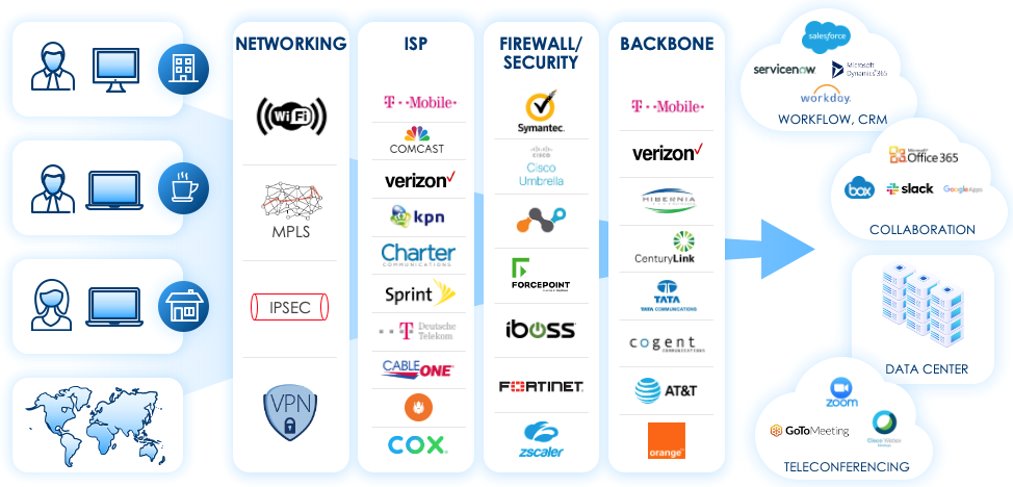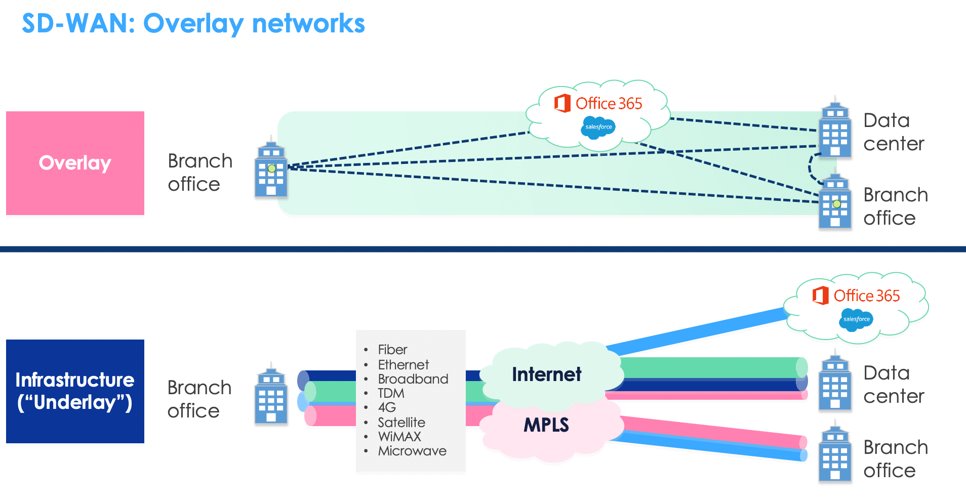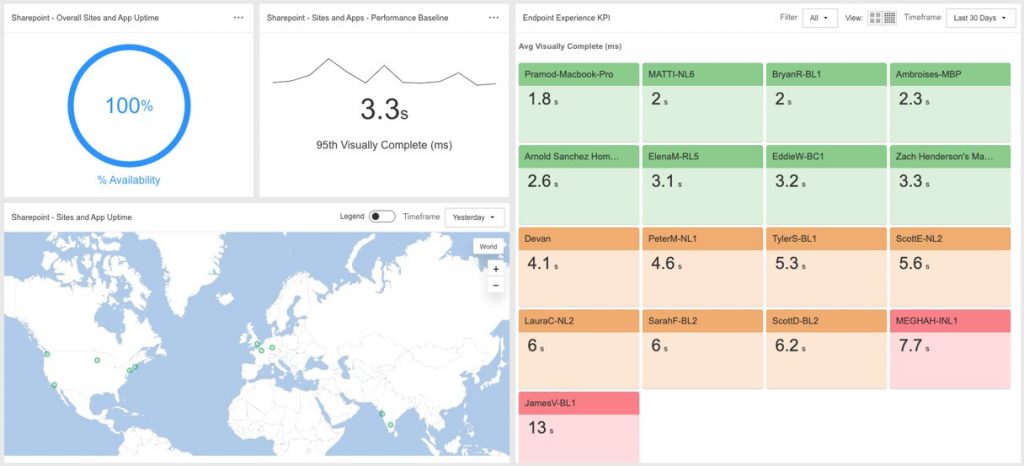Event in Review: ONUG Fall 2020
“Acceleration to the Enterprise Cloud” was the focus of ONUG Fall 2020 and was attended by an unprecedented number of Cloud space experts.
ONUG Fall 2020 was another major event that went virtual this year. With over 70 different sessions and more than 55 speakers, the event garnered almost 3000 attendees. “Acceleration to the Enterprise Cloud” was the focus of ONUG Fall 2020 and was attended by an unprecedented number of enterprise architects, providers, and thought leaders in the Cloud technology space.
The COVID pandemic has accelerated the adoption and implementation of digital transformation strategies. We are in the midst of a global IT transformation that has seen enterprises take advantage of cloud services to support a distributed and remote workforce. The event provided a platform for thought leaders and attendees to discuss best practices and map out their digital transformation strategies.
ONUG Fall key topics included:
- Role of the enterprise cloud in redefining and managing the new IT and corporate culture
- The enterprise cloud as the platform for AI-driven business automation
- Methodologies for the deconstruction of private data centers and construction of the future digital enterprise
- Role of cloud and mobile computing in the new digital enterprise
- Demonstration of the industry’s first multi-cloud automated governance reference implementation
- A line up of sessions, keynotes and panels on key cloud technologies and business issues
In this blog, we recap the key takeaways from the two sessions that Catchpoint presented at ONUG:
- Three Monitoring Challenges of Today’s Enterprise
- The Top 3 Persistent Visibility Gaps in Multi-Cloud
Three Monitoring Challenges of Today’s Enterprise
The first session was presented by Zach Henderson, Senior Solutions Engineer at Catchpoint. He discussed some of the monitoring challenges faced by enterprises today. As illustrated below in Fig 1, the current digital landscape is a mix of different ISP options, network types, data centers, SaaS tools, and multiple other intermediary layers and variables. These disparate components require a comprehensive monitoring approach which raises a set of unique challenges that can be broadly categorized into the following:
- Distributed workforce
- Reliance on a distributed and diverse application and network environment
- End to end visibility into end-user experience

Fig 1
The remote workforce demands a quality digital experience to maintain employee productivity. Employees are no longer within the controlled intranet environment and are accessing company assets over local ISPs with different bandwidth and latency. In such a scenario, it is difficult to pinpoint the cause of performance degradation or outage – is it the local ISP? The user’s device? Or the application itself?
Monitoring Distributed and Diverse Application and Network Environments
Another layer of complexity is introduced by all the different SaaS/IaaS applications such as O365, Zoom, Salesforce, etc. There are a lot of visibility gaps when monitoring these applications as there are several external factors, such as SD-WAN, VPN, and other underlays, impacting the end-user experience. These advanced networking services are implemented to improve the quality of experience, but it brings in a lot of complexity. So even with all the telemetry at the application and infrastructure layer, you may still have challenges understanding real end-user experience.
Troubleshooting SaaS Performance
Let us consider the monitoring challenges posed by a SaaS application like O365, there is:
- Limited visibility into O365 and intermediary third-parties’ systems.
- No visibility into how employees transit the Internet to reach O365.
- No real measurement of performance, availability, and reachability.
- Isolating specific user issues, network issues, or application issues is difficult.
These challenges can be overcome with the right monitoring test types running from strategic network locations and with the right set of monitoring metrics. Catchpoint recommends:
Deployment Strategy:
- Endpoint Nodes on end user devices (e.g. laptops) to measure from home and on-premise environments.
- Enterprise Nodes in offices and data centers.
Critical Monitoring Metrics:
- End User Device
- CPU, Memory, WiFi Signal Quality, WiFi Signal Strength
- Network
- Round Trip Time, %Packet Loss, Path Changes through a proxy and BGP Routing
- Path with and without a Proxy
- Infrastructure and Third-Party Resources
- DNS, CDN, SSL
- Application
- O365 Backend Timings
- O365 Cloud Environments
- User Experience
- Understand Critical Business Journeys, User-Centric Performance Metrics
- Crowdsource Public User Sentiment of O365
Required Monitor Test Types:
- DNS, TCP Ping, TCP Traceroute, SSL Verification, User Transaction Monitors
Troubleshooting Network Services
Let us consider another example that deals with the challenges brought in by advanced network services:
- SD-WAN solutions rely on multiple underlying networks that are not under your control.
- No visibility into how employees transit the Internet or managed networks to reach data centers.
- Difficulty troubleshooting and correlating end user issues.
- Need to reduce time to innocence (MTTI) for the network team.

Fig 2
In Fig 2, we illustrate the complexity of a network with the addition of “overlays” and “underlays”. How do you implement affective monitoring in such a scenario? Catchpoint recommends:
Deployment Strategy:
- Endpoint Nodes installed on end user devices (e.g. laptops) to measure network path from employee’s home Offices and on-premise offices
- Enterprise Nodes in branch offices on SD-WAN overlay network and on each underlay network, as well as in data centers to measure the bi-directional path
Critical Monitoring Metrics:
- Network
- Round Trip Time, %Packet Loss, Path Changes thru SDWAN and any relevant networks, Public Internet BGP Routing
- Path with SD-WAN Overlay and on each underlay network
- Application
- Application Backend Timings and Time to First Byte
- Application with SD-WAN
- User Experience
- Understand Critical Business Journeys, User-centric Performance Metrics
- With SD-WAN Overlay and on each underlay network
Required Monitor Test Types:
- DNS, TCP Ping, TCP Traceroute, SSL Verification, User Transaction Monitors
End to End Visibility of User Experience
The distributed workforce with its diverse application ecosystem and reliance on network services impacts the ability to understand a user’s experience. End to end visibility is a necessity when troubleshooting issues faced by remote employees. Catchpoint offers complete visibility into end-user experience, to see how this helps consider the following example. We use Catchpoint to monitor the Sharepoint service within O365 used by all our employees, using the dashboard (Fig 3) we are able to:
- Analyze if the service is up and available for all employees?
- Determine a performance baseline for the users and compare users who are above or below that baseline.
- Determine the quality of application performance for each individual.
- Correlate performance data with the user location, device, or even browser and OS type.
- Check how the user’s device memory and CPU usage impacts performance.
- Understand the impact on employee experience based on the network path and identify latency, routing issues, or anything unique in the user environment.

Fig 3
The performance data from such distributed vantage points offer visibility not just into the network but into the device and application level making it easier to pinpoint what is causing the performance issue. And this visibility determines how well you maintain employee experience.
Our second session, presented by JP Blaho, Director, Product Marketing at Catchpoint, delved deeper into visibility gaps and focussed on the top three persistent visibility gaps in multi-cloud environments – resource, security, and network. We discuss each of these and share a few use cases of how enterprises are able to properly monitor the user experience in our upcoming webinar “Key Visibility Gaps in Today’s Multi-Cloud Environments”. Register here!


